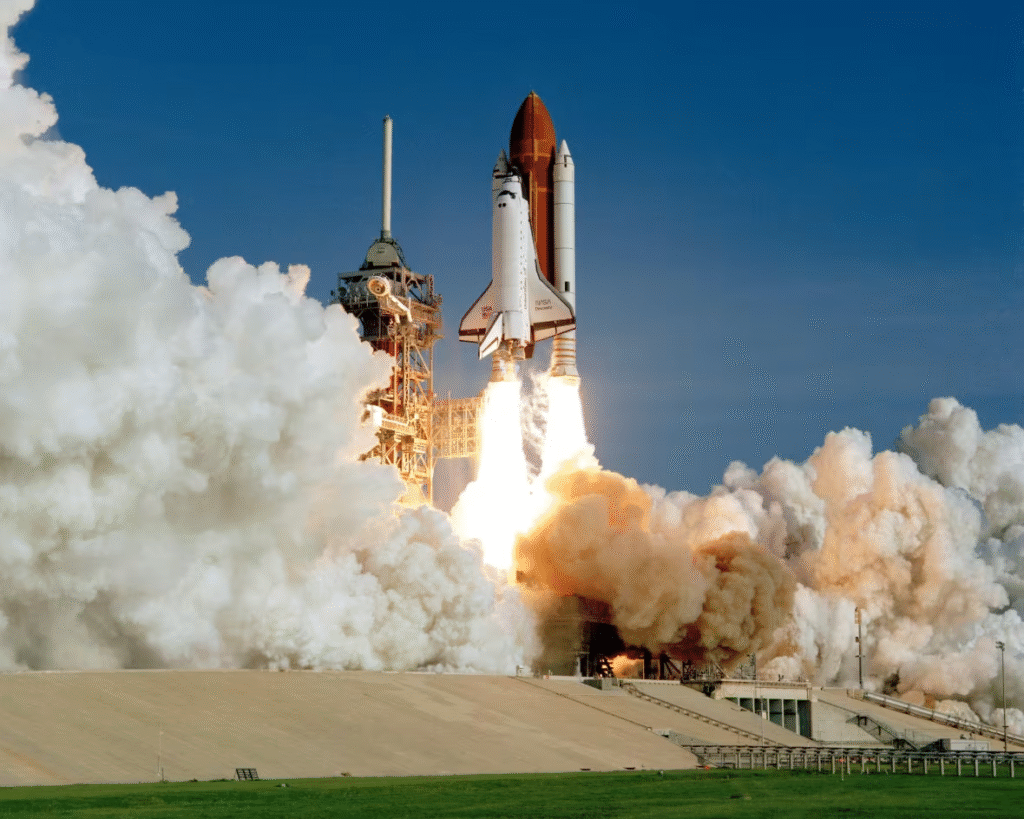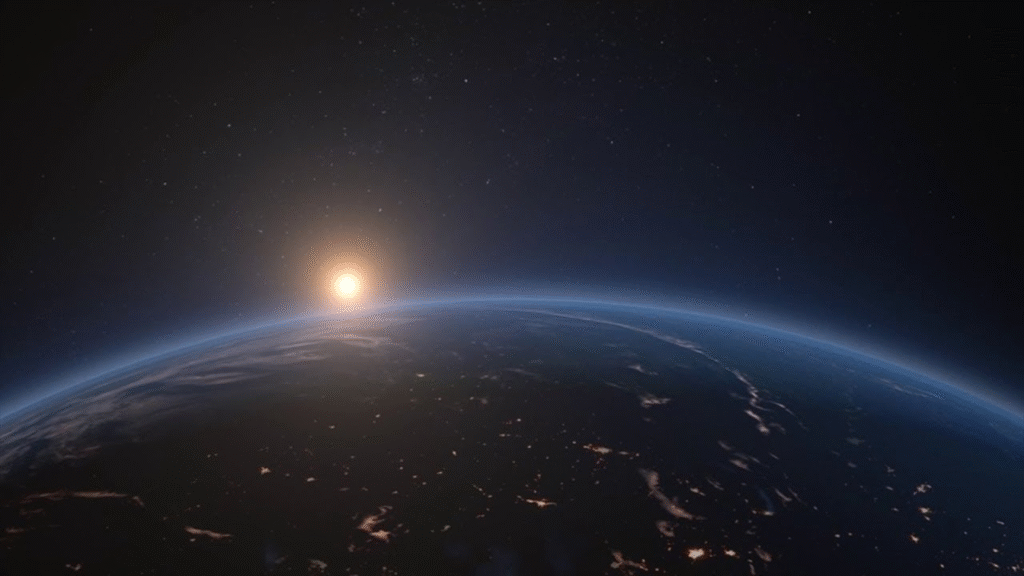As the world rushes into a new space age, scientists are sounding the alarm: our growing obsession with rocket launches could be harming something critical—Earth’s Ozone Layer depletion. The very shield that protects us from harmful ultraviolet radiation is facing a new kind of danger, and the source might surprise you. Understanding this trend is key to grasping why rocket emissions are becoming an environmental issue.
Skyrocketing Launches, Growing Concern
In 2019, the world saw just under 100 orbital rocket launches. Fast forward to 2024, and that number has shot up to 258. Projections suggest that by 2030, we could see more than 2,000 launches each year. That’s an eightfold increase in just over a decade.
This isn’t just about launching satellites or exploring deep space. Most of these launches are linked to building massive satellite constellations in low Earth orbit. While this technology promises faster internet and better global communication, it comes with a hidden cost to our atmosphere.
Ozone Layer depletion: Still Not Fully Healed

Even decades after the ban on CFCs through the Montreal Protocol, the ozone layer hasn’t fully bounced back. On average, global ozone thickness remains about 2% below pre-industrial levels, and scientists estimate we won’t see a full recovery until around 2066.
That means we’re still living with a vulnerable layer of protection. And just as we’ve begun to make progress, space-related pollution threatens to roll back those gains.
What Rockets Leave Behind
Each rocket that soars through the atmosphere doesn’t just vanish harmlessly into space. As it burns fuel to escape Earth’s gravity, it releases a cocktail of gases and particles into the upper atmosphere. Among the most concerning are chlorine compounds and black carbon, also known as soot.
Chlorine, especially from solid rocket propellants, breaks down ozone molecules in a highly efficient chemical cycle. Meanwhile, soot particles from hydrocarbon fuels like kerosene and methane linger in the stratosphere, warming it and accelerating ozone-depleting reactions.
And here’s the kicker: unlike pollution from cars or factories, these substances stay in the upper atmosphere much longer—up to 100 times longer—because they aren’t easily washed away by rain or clouds.
Alarming Findings from New Research
A major international study led by researchers at ETH Zurich and the University of Canterbury simulated future launch scenarios to understand what might happen if current trends continue. The results were eye-opening.
If launches rise to around 2,000 annually by 2030, we could see a nearly 0.3% drop in global ozone thickness. In Antarctica, where the ozone hole still appears each spring, losses could spike by up to 4% seasonally. Even under a more conservative growth model, with around 884 launches per year, noticeable declines in ozone were still projected.
These numbers might seem small—but in atmospheric science, even fractions of a percent matter. A thinner ozone layer means more harmful UV-B radiation reaching Earth’s surface, increasing risks of skin cancer, cataracts, and damage to crops and marine ecosystems.
Re-Entering Debris: An Overlooked Threat

Beyond launch emissions, another danger comes from above—literally. Thousands of satellites in low Earth orbit eventually re-enter the atmosphere and burn up. This process releases metal particles and nitrogen oxides at high altitudes.
While scientists are still studying the full impact, early research suggests these re-entry pollutants could form polar stratospheric clouds or act as catalysts for ozone destruction. These effects are not yet fully integrated into most climate and atmospheric models, meaning we may be underestimating the total damage.
As mega-constellations like Starlink and others grow, satellite re-entries will become more frequent. That means more pollution, more unknowns, and more pressure on the ozone layer.
Not All Rockets Are Created Equal
The type of fuel used in rockets makes a big difference. Solid rocket boosters, like those once used in NASA’s space shuttles, are rich in chlorine and pose a major risk to ozone. On the other hand, cryogenic fuels—such as liquid hydrogen and oxygen—are much cleaner and don’t release harmful chlorine or soot.
The problem? Only about 6% of today’s launches use cryogenic fuel. These systems are more complex and costly to handle, which is why most commercial launches still rely on cheaper, more polluting propellants.
If cleaner fuels were adopted industry-wide, the environmental impact of spaceflight could be significantly reduced.
We’ve Solved This Before—We Can Do It Again
In the late 1980s, the world came together to tackle the crisis of ozone depletion caused by CFCs. The Montreal Protocol is now considered one of the most successful environmental treaties ever signed. Thanks to that global effort, we’re slowly seeing signs of recovery.
That same cooperative spirit is needed today. Scientists are calling for new regulations to manage rocket emissions, including monitoring systems, limits on soot and chlorine-producing fuels, and investment in greener propulsion technologies.
What’s encouraging is that this is all possible. The technology exists. What’s missing is the urgency and the policy will to act before the damage becomes irreversible.
Why This Matters for Everyone
The ozone layer isn’t just a distant scientific concept—it’s essential to life on Earth. It shields us from radiation that can cause cancer, hurt our eyes, and harm ecosystems from plankton in the oceans to crops on land.
As our fascination with space grows, we must remember that exploration shouldn’t come at the cost of our atmosphere. If we don’t take action, the very industries meant to advance human progress could be putting our planet at risk.
What Can Be Done Now?
The good news is that solutions are within reach. Here’s what researchers and environmental advocates suggest:
- Promote cleaner rocket fuels: Encourage the use of cryogenic propellants and low-soot alternatives.
- Implement global emissions tracking: Establish a standard for reporting launch emissions across the space industry.
- Fund more research: Especially into satellite re-entry pollution and its long-term effects on ozone and climate.
- Build international agreements: Inspired by the Montreal Protocol, a new treaty could help regulate rocket emissions and protect atmospheric health.
Everyone has a role to play—from policymakers and scientists to the private companies leading the charge into orbit.
conclusion
The space race is no longer between a few countries—it’s a global endeavor involving thousands of launches, companies, and innovations. But with great power comes great responsibility.
The science is clear: if left unchecked, the current pace of rocket launches could slow down or even reverse the healing of the ozone layer. Yet, with smarter choices and cooperative action, we can ensure that our push toward the stars doesn’t come at the expense of the only home we have.
Explore the Cosmos with Us — Join NSN Today, and a preprint version is available on the repository website ETH Zurich.



















